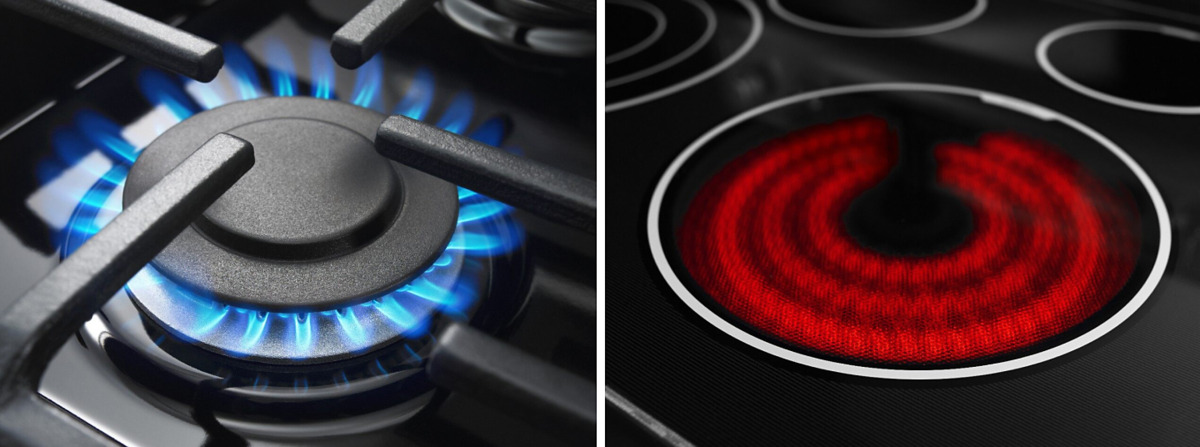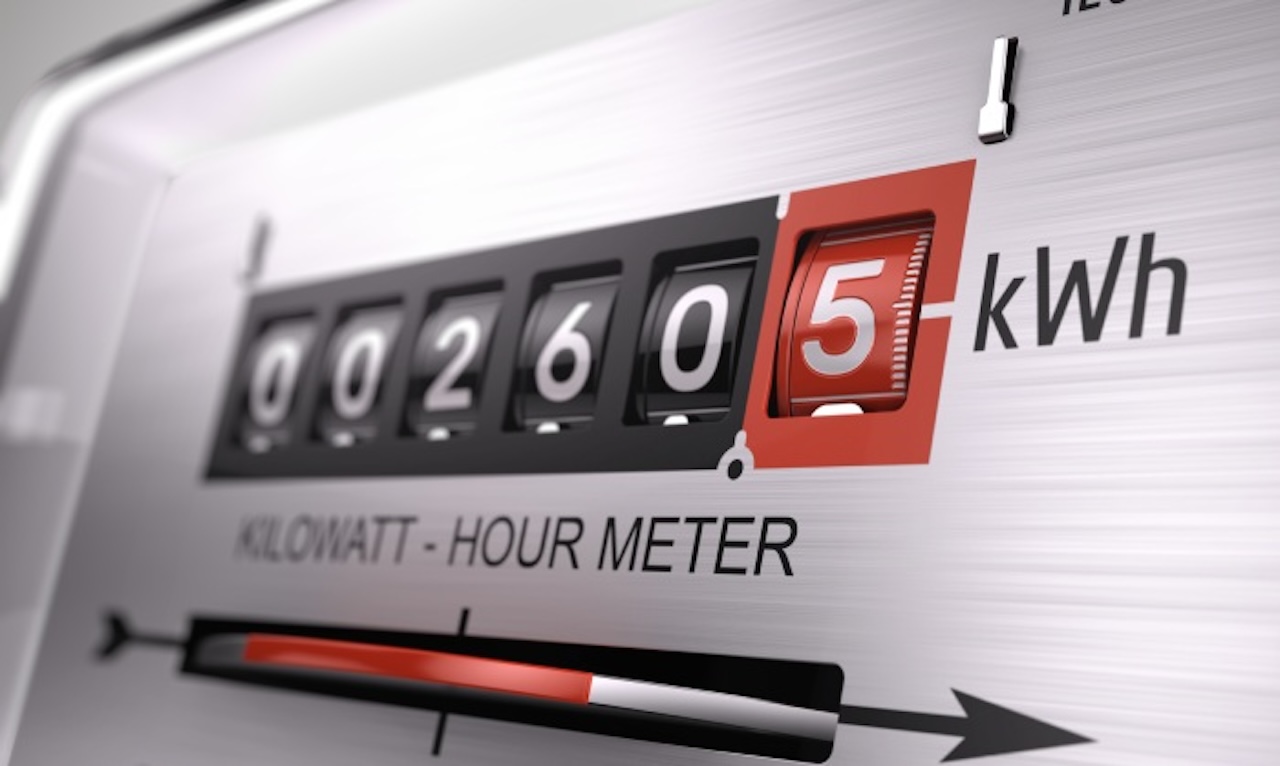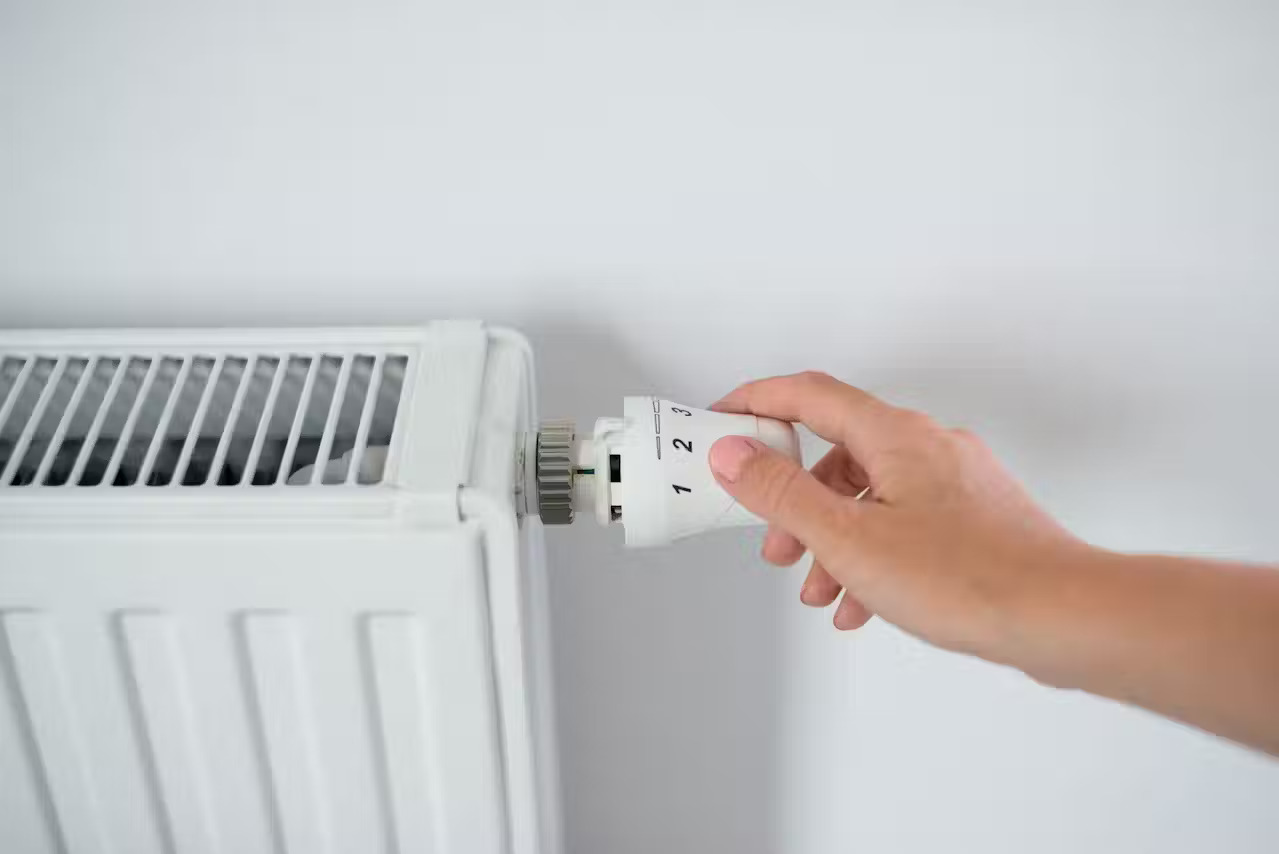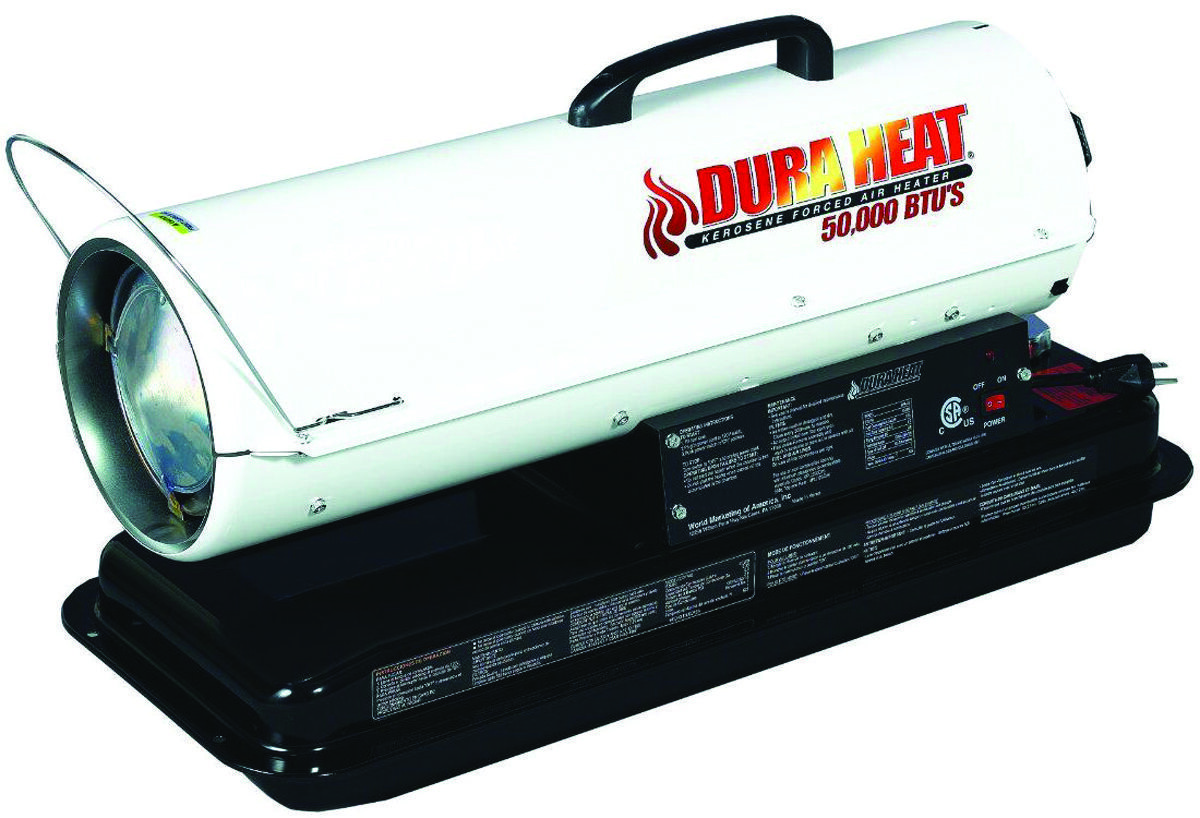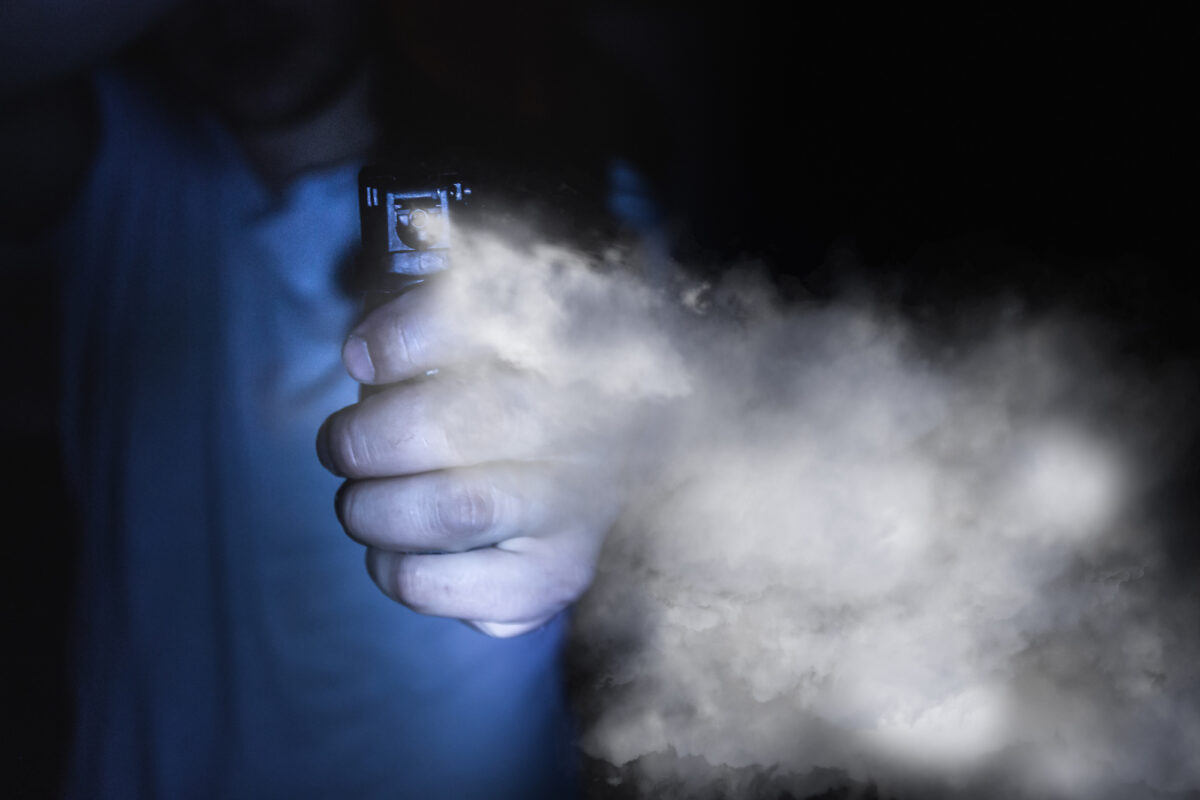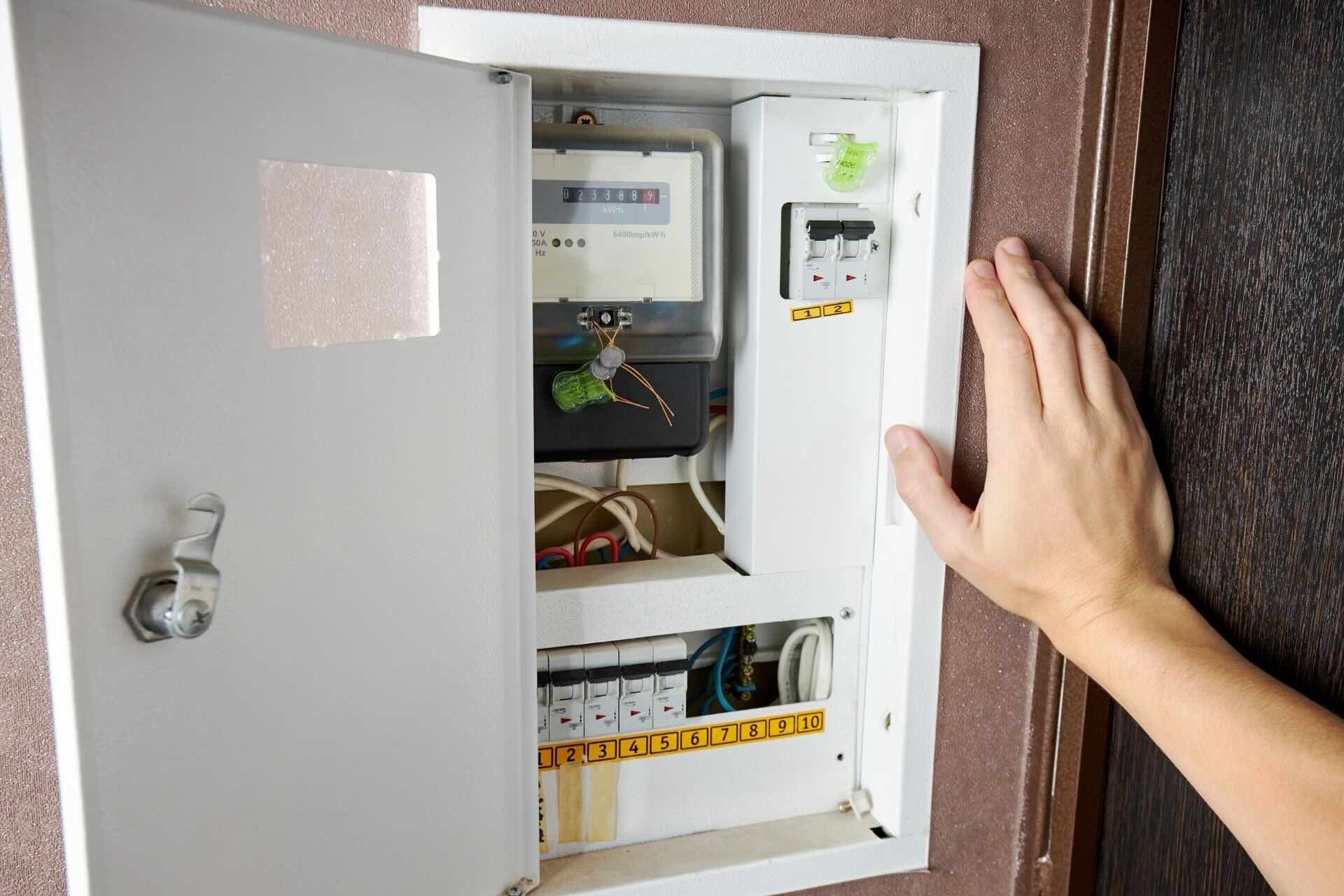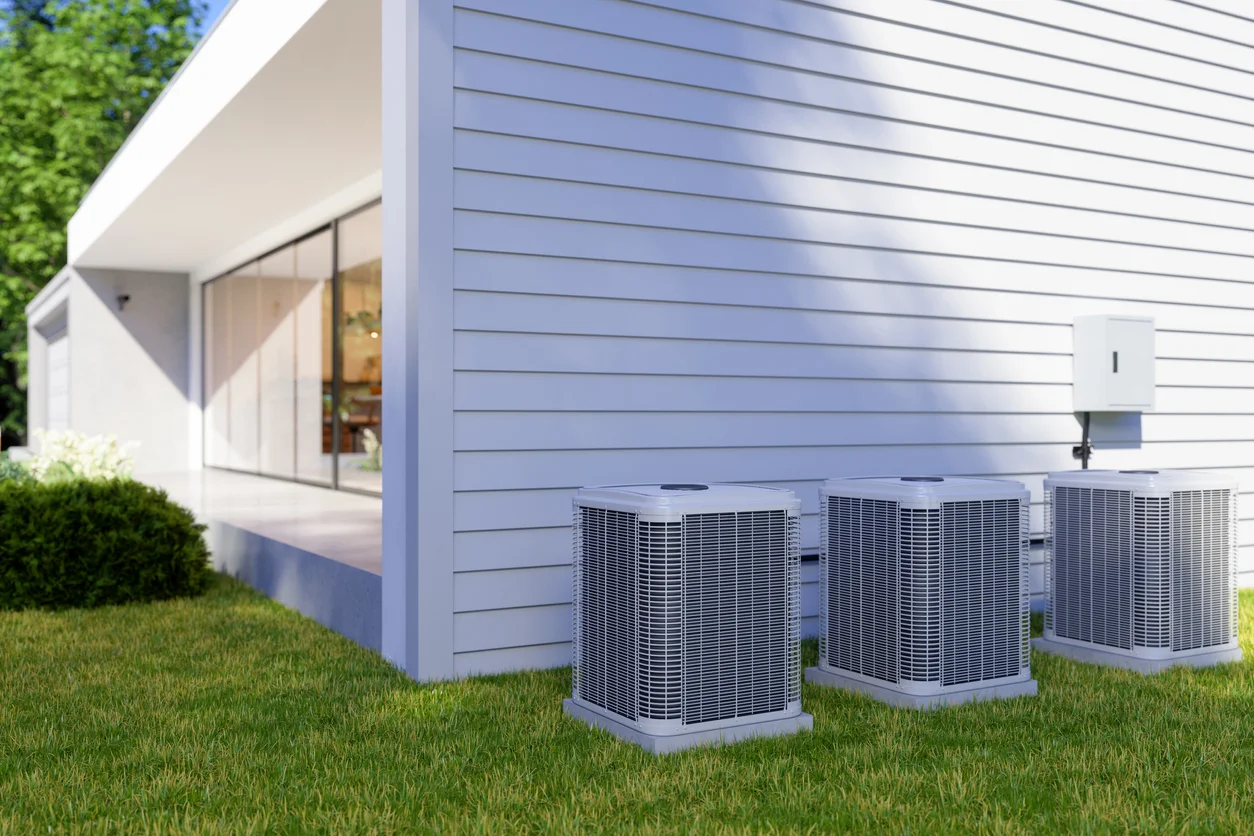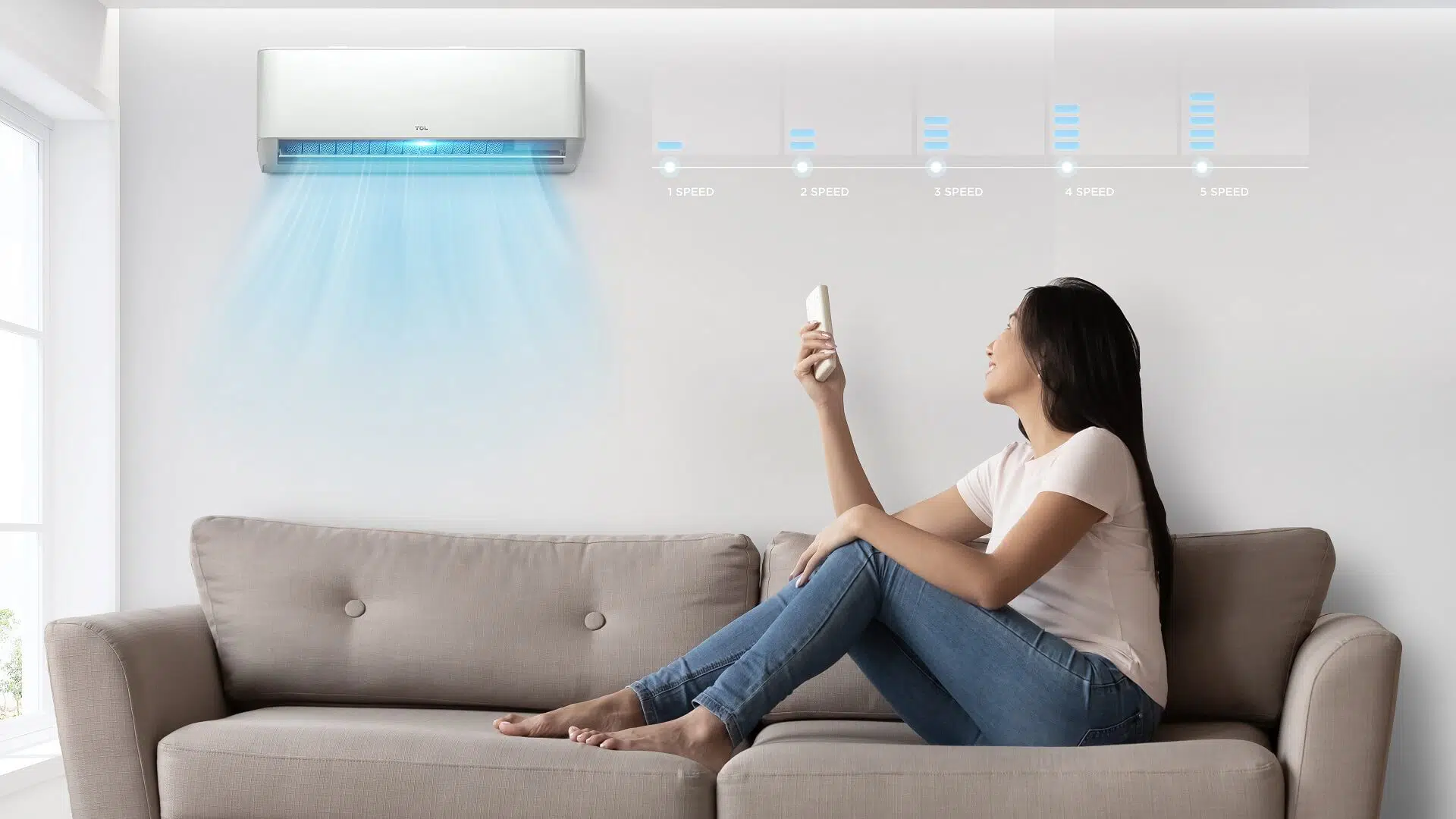Home>Home Maintenance>Which Gas Is Used In An Air Conditioner
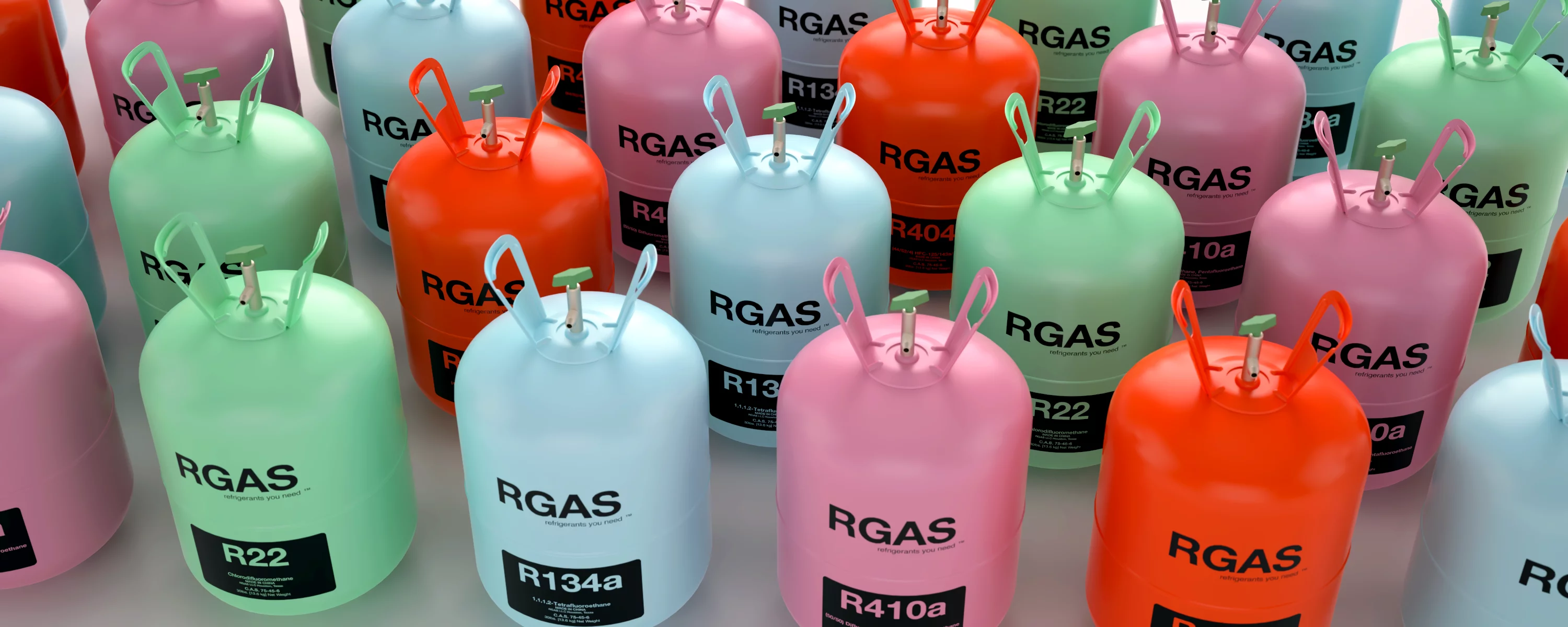

Home Maintenance
Which Gas Is Used In An Air Conditioner
Modified: March 7, 2024
Learn about the gas used in air conditioners for optimal home maintenance. Find out which gas is essential for cooling your space efficiently and effectively.
(Many of the links in this article redirect to a specific reviewed product. Your purchase of these products through affiliate links helps to generate commission for Storables.com, at no extra cost. Learn more)
Introduction
Welcome to the world of air conditioning! If you’ve ever wondered what makes your air conditioner work efficiently, then you’ve come to the right place. One crucial component of any air conditioning system is the gas used to cool the air. The type of gas plays a vital role in determining the performance and efficiency of the unit.
In this article, we will explore the various gases used in air conditioners, their importance, and how they impact the environment. Whether you are a homeowner, a DIY enthusiast, or just a curious individual seeking knowledge about air conditioning, this article will provide you with valuable insights.
So, let’s dive in and discover the world of air conditioner gases!
Key Takeaways:
- Choose the right gas for your air conditioner to improve energy efficiency, ensure safety, and minimize environmental impact. Consult with HVAC professionals to make an informed decision.
- Prioritize sustainability by selecting eco-friendly refrigerants with low GWP and zero ODP. Stay updated on regulations and support initiatives for a greener future.
Read more: Which Air Conditioner Brand Is The Best
Importance of Gas in Air Conditioners
The gas used in air conditioners is a crucial component that enables the system to cool and dehumidify the air effectively. Without the right gas, an air conditioner would be ineffective in regulating indoor temperature and maintaining a comfortable environment.
The primary function of the gas in an air conditioner is to facilitate the heat exchange process. The gas circulates through the system, absorbing heat from the indoor air and transferring it to the outdoor unit. This allows the air conditioner to cool the indoor space and maintain a pleasant temperature.
Additionally, the gas also plays a vital role in dehumidifying the air. As the air passes over the cold evaporator coil, the moisture in the air condenses and is collected in a drain pan, effectively reducing the humidity levels. This is particularly important in humid climates where excess moisture can lead to discomfort and potential mold growth.
Furthermore, the type of gas used in an air conditioner can impact its energy efficiency. Certain gases have better heat exchange properties, allowing the system to cool the air more efficiently. This results in reduced energy consumption and lower utility bills.
Another aspect to consider is the longevity and reliability of the air conditioning system. The right gas can ensure smooth and continuous operation, minimizing the risk of breakdowns and costly repairs.
In summary, the gas used in air conditioners is of utmost importance as it enables the cooling and dehumidification process, improves energy efficiency, and ensures the longevity and reliability of the system.
Common Gases Used in Air Conditioners
There are several types of gases commonly used in air conditioning systems. These gases serve as refrigerants, which are substances that undergo phase changes to absorb and release heat, enabling the cooling process. Here are some of the most common gases used in air conditioners:
- R-410A: This is a hydrofluorocarbon (HFC) refrigerant that is commonly used in modern air conditioning systems. It has replaced older refrigerants, such as R-22, due to its higher energy efficiency and environmental friendliness. R-410A is known for its excellent cooling capacity and is widely used in residential and commercial applications.
- R-22: Also known as Freon, R-22 is a hydrochlorofluorocarbon (HCFC) refrigerant. While it has been phased out in many countries due to its harmful effects on the ozone layer, it is still found in some older air conditioning systems. It is important to note that the production and import of R-22 are being phased out as part of international agreements.
- R-32: This refrigerant is a hydrofluorocarbon (HFC) that is gaining popularity due to its low global warming potential (GWP). R-32 has a higher cooling capacity compared to other refrigerants, making it more efficient. It is often used in split air conditioning systems and is gradually becoming a preferred choice in new installations.
- R-134a: This is a hydrofluorocarbon (HFC) refrigerant commonly used in automotive air conditioning systems. R-134a has replaced older refrigerants, such as R-12, due to its lower impact on the ozone layer. It is also used in some small household appliances.
- R-290: Also known as propane, R-290 is a hydrocarbon (HC) refrigerant that has gained attention for its low environmental impact. It has a very low GWP and is non-toxic, making it an eco-friendly alternative. However, due to its flammability, it requires specific safety measures and is primarily used in commercial refrigeration systems.
It’s important to note that the choice of gas will vary depending on factors such as system design, efficiency requirements, safety considerations, and applicable regulations. Consult with a qualified HVAC professional to determine the most suitable gas for your air conditioning system.
Refrigerant Gases
Refrigerant gases are specifically designed to facilitate the heat exchange process in air conditioning systems. They undergo phase changes from a gas to a liquid and back to a gas, absorbing and releasing heat to cool the air effectively. Here are some key refrigerant gases used in air conditioning:
- R-410A: As mentioned earlier, R-410A is a widely used refrigerant in modern air conditioning systems. It is a blend of hydrofluorocarbons (HFCs) that does not contain chlorine, making it ozone-friendly. R-410A has a higher cooling capacity and energy efficiency compared to older refrigerants like R-22, which have been phased out due to their higher environmental impact.
- R-22: Also known as Freon, R-22 was once a commonly used refrigerant. However, due to its chlorine content, which contributes to ozone depletion, it is being phased out globally. R-22 is still found in some older air conditioning systems, but it is important to note that its production and import are being discontinued. As a result, many homeowners are transitioning to systems that use the more environmentally friendly R-410A refrigerant.
- R-32: R-32 is a hydrofluorocarbon (HFC) refrigerant that offers better energy efficiency and a lower GWP compared to other refrigerants. It has a higher cooling capacity and requires less refrigerant volume, making it an attractive choice for air conditioning systems, especially in split units. R-32 is also considered a safer alternative to some other refrigerants due to its non-toxic nature.
- R-134a: This HFC refrigerant is primarily used in automotive air conditioning systems. It has replaced older refrigerants like R-12, which contribute to ozone depletion. R-134a is known for its excellent cooling properties and relatively low GWP. However, there are ongoing discussions about finding even more environmentally friendly alternatives for automotive cooling systems.
- R-290: R-290, or propane, is a hydrocarbon (HC) refrigerant that has gained attention for its low environmental impact. It is non-toxic and has an extremely low GWP. However, due to its flammability, strict safety precautions are necessary when using R-290. It is primarily used in commercial refrigeration systems.
Refrigerant gases are crucial in air conditioning systems as they facilitate the heat exchange processes required to cool the air efficiently. It is important to choose the appropriate refrigerant gas for your system, considering factors such as energy efficiency, environmental impact, and safety regulations.
The gas used in most air conditioners is called refrigerant. It absorbs heat from the indoor air and releases it outside, helping to cool the air inside the building.
Non-Refrigerant Gases
In addition to refrigerant gases, there are also non-refrigerant gases used in air conditioning systems. These gases play important roles in various components of the system, enhancing its functionality and efficiency. Here are some of the non-refrigerant gases commonly found in air conditioners:
- Nitrogen: Nitrogen is an inert gas with various applications in air conditioning systems. It is often used for pressure testing and purging the system during installation or maintenance. Nitrogen is non-reactive and helps prevent oxidation or contamination of the internal components, ensuring the longevity and reliability of the system.
- Oxygen: While oxygen is not intentionally added to air conditioners, it may be present in the system due to air leaks or improper evacuation. Excess oxygen can cause oxidation and corrosion of internal components, leading to system malfunction. Proper installation practices and regular maintenance help minimize the presence of oxygen in air conditioning systems.
- Moisture/Humidity: The presence of moisture or humidity in an air conditioning system is considered a non-refrigerant gas that needs to be controlled. Moisture can affect the performance of the system by causing ice formation, reducing cooling capacity, and promoting mold or bacteria growth. Proper dehumidification and moisture control measures should be integrated into the system design to ensure optimal performance.
- Carbon Dioxide (CO2): CO2 is present in the ambient air and can be a byproduct of human respiration. While not directly used in air conditioning systems, high levels of CO2 can contribute to poor indoor air quality and discomfort. Effective ventilation systems are necessary to remove excess CO2 and maintain a healthy indoor environment.
- Refrigerant Byproducts: During the heat exchange process, refrigerant gases can undergo chemical reactions or breakdowns, producing byproducts. These byproducts include acids, sludge, and other contaminants that can adversely affect the system’s performance. Regular maintenance and filtration systems are crucial for removing these byproducts and keeping the system functioning optimally.
Non-refrigerant gases may not directly contribute to the cooling process, but they play important roles in system installation, operation, and maintenance. It is essential to manage these gases effectively to ensure the longevity, efficiency, and overall performance of the air conditioning system.
Read more: How Much Gas Does Air Conditioning Use
Factors to Consider in Gas Selection
When choosing the gas for an air conditioning system, several factors need to be taken into consideration. The selection of the right gas can greatly impact the system’s performance, energy efficiency, and environmental impact. Here are some key factors to consider when choosing a gas for your air conditioner:
- Energy Efficiency: Different gases have different cooling capacities and heat exchange properties. Choosing a gas with higher energy efficiency can result in lower energy consumption and reduced utility bills. Look for gases that have a higher coefficient of performance (COP) and a lower global warming potential (GWP) to ensure optimal energy efficiency.
- Safety: Safety is of utmost importance when selecting a gas for your air conditioning system. Some gases may be flammable, toxic, or pose other safety risks. It is crucial to understand the safety precautions, regulations, and requirements associated with the gas you choose. Consult with a qualified HVAC professional to ensure compliance with safety standards.
- Environmental Impact: Given the concern for environmental sustainability, it is essential to choose a gas with a low impact on the environment. Look for gases with low global warming potential (GWP) and zero ozone depletion potential (ODP). Hydrofluorocarbons (HFCs) are generally considered more environmentally friendly than older refrigerants like hydrochlorofluorocarbons (HCFCs).
- Availability: Consider the availability and accessibility of the gas you choose. It is important to select a gas that can be easily obtained, serviced, and maintained. Availability of spare parts and service technicians familiar with the chosen gas can greatly impact the ease of maintenance and repairs in the future.
- System Compatibility: Ensure that the chosen gas is compatible with your air conditioning system. Different systems may have specific requirements and limitations regarding the type of gas they can use. Consult the system’s manufacturer or a qualified HVAC professional to verify compatibility and ensure optimal performance.
- Regulatory Compliance: Stay updated with the relevant regulations and guidelines regarding the use of specific gases in your region. Governments and environmental organizations often impose restrictions and phase-outs of certain gases due to their environmental impact. Compliance with these regulations is crucial to avoid legal consequences and contribute to sustainability efforts.
By carefully considering these factors, you can make an informed decision when selecting the gas for your air conditioning system. Consult with HVAC professionals and stay informed about industry developments to ensure that your choice aligns with energy efficiency, safety, and environmental standards.
Environmental Impact of Air Conditioner Gases
The environmental impact of air conditioner gases is a significant concern due to their potential contribution to climate change and ozone depletion. The choice of gas used in air conditioning systems can have a substantial effect on the environment. Here are some key aspects to consider regarding the environmental impact of air conditioner gases:
- Ozone Depletion Potential (ODP): Some older refrigerant gases, such as hydrochlorofluorocarbons (HCFCs), have been found to contribute to the depletion of the ozone layer. Ozone depletion allows harmful ultraviolet (UV) radiation to reach the Earth’s surface, which can lead to increased cases of skin cancer and other ecological imbalances. It is crucial to phase out the use of gases with high ODP and transition to more ozone-friendly alternatives.
- Global Warming Potential (GWP): The GWP of a gas measures its ability to trap heat in the atmosphere over a specific time period, usually 100 years. Gases with high GWP contribute to the greenhouse effect, trapping more heat and leading to climate change. Hydrofluorocarbons (HFCs) have relatively high GWP, although they have zero ODP. Recently, there has been a global effort to phase out high-GWP refrigerants in favor of low-GWP alternatives to mitigate climate change impacts.
- Phase-Out of Harmful Gases: International agreements, such as the Montreal Protocol, have set targets for the phase-out of substances that deplete the ozone layer, including certain refrigerants. Many countries have already taken steps to phase out refrigerants like chlorofluorocarbons (CFCs) and HCFCs in favor of more environmentally friendly options. It is important to stay updated on these regulations to ensure compliance and contribute to global sustainability efforts.
- Eco-Friendly Refrigerants: The development and use of eco-friendly refrigerants have gained momentum to reduce the environmental impact of air conditioning systems. These include hydrofluoroolefins (HFOs), natural refrigerants like hydrocarbons (HCs), and certain blends and mixtures that have lower GWP and zero ODP. These new refrigerants offer improved energy efficiency and reduced environmental harm compared to their predecessors.
- Proper Disposal and Recycling: To prevent environmental contamination, it is crucial to properly dispose of or recycle air conditioner gases and system components at the end of their lifecycle. Specialized disposal procedures and recycling facilities ensure that refrigerants are safely handled and prevent their release into the atmosphere. Improper disposal can lead to emissions of greenhouse gases and contribute to ozone depletion.
As consumers and HVAC professionals, it is our responsibility to make sustainable choices when selecting air conditioner gases. Opting for refrigerants with low GWP, zero ODP, and better energy efficiency can significantly reduce the environmental impact of air conditioning systems. Staying informed about environmental regulations and supporting initiatives to phase out harmful gases are key steps towards a more environmentally friendly future.
Conclusion
The selection of the right gas for an air conditioning system is crucial for its performance, energy efficiency, and environmental impact. It is important to consider various factors such as energy efficiency, safety, environmental impact, availability, system compatibility, and regulatory compliance when choosing a gas. By making informed decisions, we can contribute to the sustainability and longevity of our air conditioning systems while minimizing our impact on the environment.
Refrigerant gases like R-410A, R-22, R-32, R-134a, and R-290 are commonly used in air conditioning systems. Each gas has its own properties and considerations, so it is essential to consult with HVAC professionals to determine the most suitable gas for your specific system and needs.
The environmental impact of air conditioner gases cannot be overlooked. Gases with high ozone depletion potential (ODP) and global warming potential (GWP) should be phased out and replaced with environmentally friendly alternatives. International agreements and regulations are in place to guide this transition and promote sustainability.
Proper disposal and recycling of air conditioner gases and components are important to prevent environmental contamination. Following established procedures and utilizing specialized facilities ensures that refrigerants are handled safely and responsibly.
As consumers and HVAC professionals, it is our responsibility to prioritize energy efficiency, safety, and environmental sustainability. By continuously educating ourselves about new developments and best practices, we can make informed decisions in choosing air conditioner gases and contribute to a greener future.
Remember, the comfort provided by air conditioning systems should not come at the expense of the environment. By making conscious choices, we can strike a balance between comfort and sustainability, ensuring a cleaner and healthier planet for future generations.
Frequently Asked Questions about Which Gas Is Used In An Air Conditioner
Was this page helpful?
At Storables.com, we guarantee accurate and reliable information. Our content, validated by Expert Board Contributors, is crafted following stringent Editorial Policies. We're committed to providing you with well-researched, expert-backed insights for all your informational needs.

